Growth and Development - 1 Chapter Notes | Crash Course for UGC NET Education PDF Download
Growth and Development
Growth refers to the measurable physical changes and increase in a child's size, such as height, weight, and body mass index. In contrast, development involves a progression from simplicity to complexity, where a child acquires more refined knowledge, behaviour, and skills over time.
Growth is about how big or small a child is. For example, if a baby is born with a body mass index of 15 and a year later it is 18, it is considered as growth. Growth is easily measurable.
Development is the change in the mind, behaviour and personality of the child. For example, if a child starts walking at the age of 1 year, it is considered as development. Development is not easily measurable.
Human development is a lifelong journey of physical, behavioural, cognitive, and emotional growth and change, starting from conception and continuing until death. This process involves significant changes at various life stages, including infancy, childhood, adolescence, and adulthood.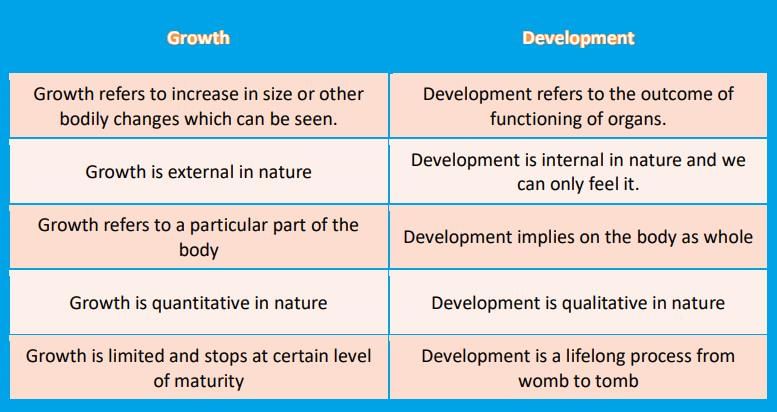
Throughout these stages, individuals develop unique attitudes and values that influence their choices, relationships, and understanding of the world. The scientific study of human development aims to understand and explain the reasons behind the changes people undergo throughout their lives. This encompasses all aspects of human growth, including physical, emotional, intellectual, social, perceptual, and personality development.
While there are universally accepted principles of development, the rate and timing of changes can vary from person to person. Growth and development are often seen as interconnected and dependent on each other, but they are not the same. Growth is a part of development, and development includes growth. Growth is quantitative, focusing on measurable changes in size and shape, while development is qualitative, involving changes in function and structure.
Difference Between Growth and Development
- Growth involves physical changes in an organism, such as increases in height, weight, and body mass index.
- Development refers to overall and progressive changes in an organism, including the acquisition of new skills, knowledge, and behaviour.
- Growth occurs at the cellular level, while development involves changes at the organizational level.
- Growth is about changes in shape, form, structure, and size, whereas development involves structural and functional changes in the body.
- Growth stops at maturation, while development continues until death.
- Growth is a part of development, and development includes growth.
- Growth is quantitative in nature, focusing on measurable changes, while development is qualitative, involving changes in quality and function.
- Growth and development are correlated and dependent on each other, but they are not the same.
Growth
Growth is the process of increasing in size and changing in structure. This includes things like becoming bigger, changing proportions, losing old features, and gaining new ones. For example, when a child grows, they not only get taller but also their body proportions change, they lose baby teeth, and they develop new physical features.
Growth involves both structural and physiological changes. This means that as an organism grows, there are changes in its physical structure (like bones and organs) and in its physiological functions (like metabolism and digestion).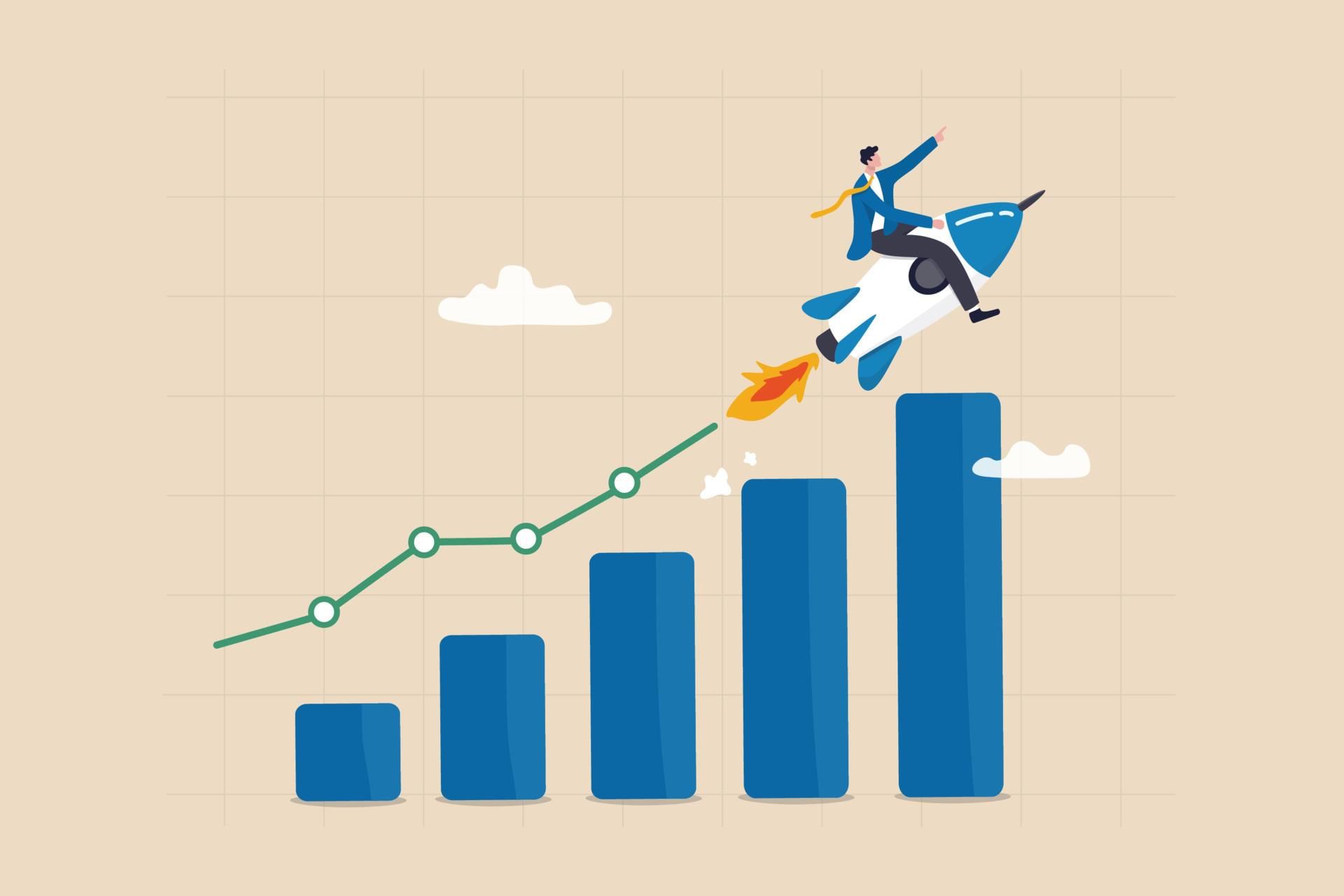
Development
Development refers to a series of changes that happen in a specific order and pattern as a result of maturation and experience. These changes are progressive, meaning they build on each other over time. For instance, a child first learns to crawl, then to walk, and later to run. This sequence is typical and expected as the child matures and gains experience.
Development is not just about physical growth ; it also involves changes in behavior that result from environmental influences. For example, a child might learn to share toys with others because of the social environment they are in, which is a behavioral change that comes from experience and interaction with others.
Principles of Development
- Individual Differences in Development: Children develop at different rates, with some showing more rapid changes in certain areas than others. However, there are fundamental principles of development that apply to all children.
- Continuous Process: Development is a lifelong process, with humans continuing to grow, change, and be influenced by experiences throughout their lives. Most significant growth and noticeable changes occur during childhood, particularly in the early years, although development continues at all ages.
- Variability in Rate: Each child is a unique combination of emotional, mental, and physical traits, leading to differences in their developmental timelines. A child may excel in one area of growth before another, highlighting the variability in developmental rates among individuals.
- Interrelated Aspects of Growth: All aspects of human growth—physical, emotional, social, and mental—are interconnected. Improvements in physical health, for example, positively impact self-concept, which in turn is related to academic success. Social development also influences individual behavior, underscoring the interrelated nature of growth aspects.
- Staged Development: Human development is marked by distinct stages: infancy, childhood, adolescence, and adulthood. These stages are common to all individuals, although the timing may vary.
- Influence of Heredity and Environment: The outcome of growth and development is shaped by the interaction between genetic potential and environmental factors. Both heredity and environment play crucial roles in determining developmental outcomes.
- Directionality in Development: While individuals develop at different rates, they all progress through the same stages in a predictable sequence. For instance, babies typically crawl before they stand and walk, with each successfully mastered stage paving the way for more complex tasks.
Major Directions of Development
(i) Cephalocaudal and Proximodistal Development: Humans develop from head to feet (cephalocaudal) and from the center of the body outward (proximodistal). This means the head develops first, followed by the trunk, arms, and legs, with large muscle groups maturing before smaller ones.
(ii) Structure Precedes Function: Muscles and body parts must be structurally ready before they can perform specific functions. An individual cannot use their body for a task until it is physically capable of doing so.
(iii) General to Specific Development: Young children perceive objects as whole units before they are able to focus on individual parts. Development progresses from understanding the general whole to recognizing specific details.
(iv) Concrete to Abstract Thinking: Mental development moves from the ability to think about things that are physically present to the capacity to visualize and understand things that are not present, leading to abstract conceptualization.
(v) Egocentrism to Perspectivism: Young children initially see themselves as the center of their universe and interpret events based on their own needs. As they grow and interact with others, they learn to understand different perspectives and develop abstract principles.
(vi) Outer Control to Inner Control: Young children rely on others for physical care and the formation of values and principles. As they mature, they develop their own value systems and internal controls.
(vii) Absolutism to Relativism: Children view everything as absolute and unchangeable. With growth, they learn that things can be altered to suit specific situations.
(viii) Spiraling Development: The same task is mastered at varying levels of complexity at different stages of development, such as walking, running, etc.
Cognitive Processes
Cognition comes from the Latin word "cognosco," which means "to recognize." Cognitive processes involve the mental activities related to acquiring and storing knowledge. This includes various intellectual functions such as attention, knowledge formation, judgment, evaluation, reasoning, problem-solving, and decision-making. Essentially, it's about using what we already know to create new knowledge, showcasing a fundamental human ability that defines us.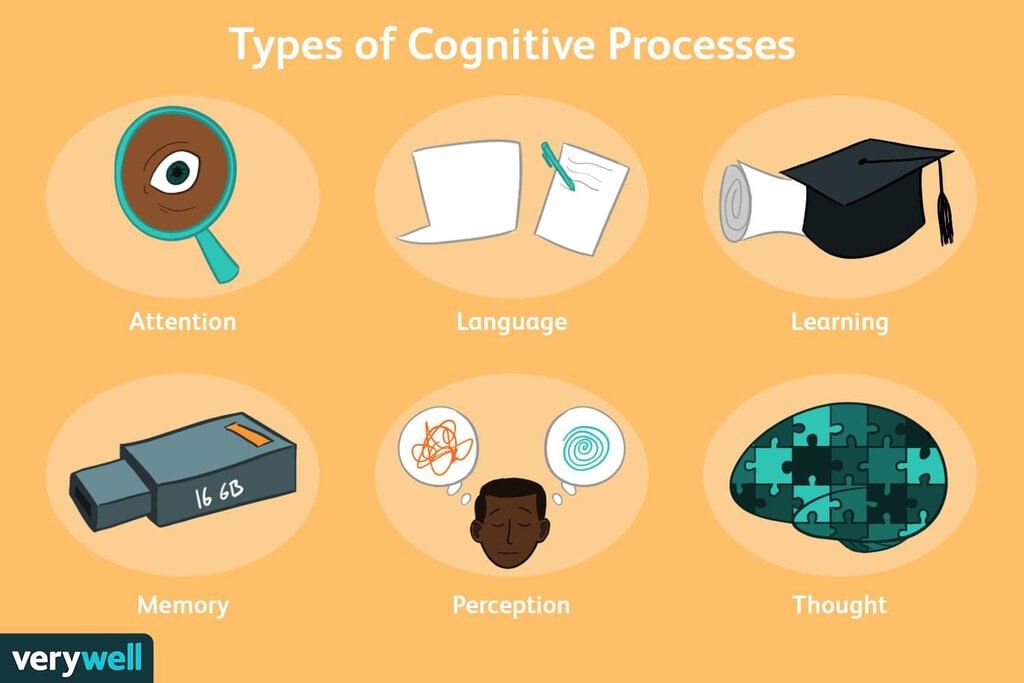
Different fields like sociology, linguistics, neurology, anthropology, and philosophy analyze cognitive processes. In psychology, cognitive psychology focuses on studying these processes. Cognitive psychologists investigate various aspects of cognition, including:
- Attention: The ability to focus on specific stimuli.
- Perception: How we interpret sensory information.
- Memory: The process of storing information for later retrieval.
These cognitive functions work together to integrate new knowledge and shape our understanding of the world. Cognitive processes can occur naturally or artificially, consciously or unconsciously, but they typically happen quickly. In the 1960s, a new psychological perspective emerged, leading to the cognitive revolution and a deeper exploration of cognitive processes. Today, these processes are studied not only in relation to disorders but also in fields like marketing and sales. Neuroimaging has significantly advanced our understanding of how we process information and the brain regions associated with different cognitive processes.
Types of Cognitive Processes
Basic Cognitive Processes
1. Sensation and Perception:
- Sensation involves the detection of stimuli from our environment through our senses. These stimuli are filtered by our senses before reaching our brain. Once the information is received, perception takes over, and we begin to interpret these stimuli.
- Humans constantly use perception without being aware of it. We are aware of things like other people's movements, food flavors, and our own posture. Our past experiences also play a crucial role in how we interpret different stimuli.
- Gestalt psychologists were pioneers in the study of perception. They believed that we perceive reality as a whole made up of different parts. Their famous principle, "The whole is greater than the sum of the parts," highlights this idea. They also explained various types of perception, including illusions.
2. Attention:
- Attention is the cognitive process that allows us to focus on relevant stimuli and respond to them. In our daily lives, we encounter many stimuli simultaneously, but we can direct our attention to what interests us. For example, activities like walking and chewing require little attention, while speaking and using body language, especially during a lecture, demand more focus.
- There are different types of attention, including arousal, focused attention, sustained attention, selective attention, alternating attention, and divided attention. These types of attention are essential for navigating our lives.
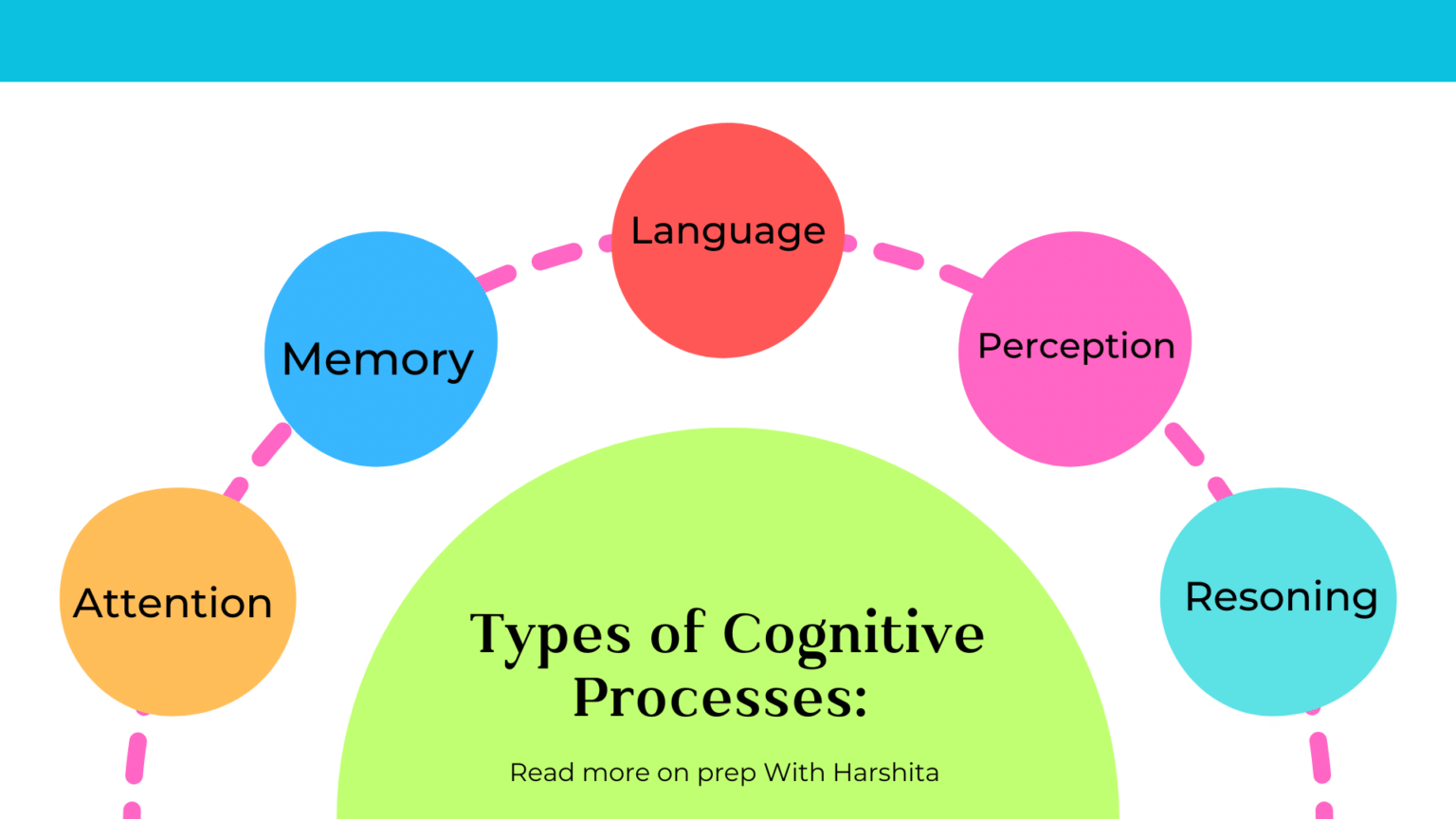
3. Memory:
- Memory is responsible for storing the answers to our questions. It enables various processes, such as encoding, consolidating, and retrieving information from the environment. There are different types of memory, including sensory memory, short-term memory, working memory, and semantic memory. While these types of memory interact with each other, they do not all rely on the same areas of the brain.
- Memory involves three main processes:
- a. Encoding: This is the process of transforming information from the moment it is received into a form that the brain can store.
- b. Storage: Storage refers to how long a memory lasts, its capacity, and the type of information it holds.
- c. Retrieval: Retrieval is the process of getting information out of storage when needed.
High or Complex Cognitive Processes
1. Intelligence
- Gardner's theory suggests that there are multiple types of intelligence, including intrapersonal, linguistic, logical-mathematical, and musical intelligence. Emotional intelligence, which involves managing daily challenges, has also gained attention.
- Our thoughts, despite their complexity, enable us to engage in tasks like problem-solving, reasoning, decision-making, and creative thinking. Concepts help streamline these functions by simplifying ideas, objects, or people that come to mind.
- However, sometimes we take shortcuts in processing information, leading to cognitive biases and distortions, which are negative and irrational thoughts. It's important to recognize and work on these thoughts.
2. Language
- Language is a fundamental means of communication. Through cognitive processes, we produce and understand various sounds and words, combining them to comprehend language and interact with others.
- Language development is a lifelong process, and individual communicative skills vary significantly, improving with practice.
Cognitive Development
Cognitive development involves the growth of mental abilities, including intellect, imagination, thinking, emotion, and other mental processes. It encompasses how we perceive, experience, and make decisions about the world around us. Intellectual or cognitive development refers to our capacity to adapt our behavior to changing environmental conditions as we pursue conscious goals and objectives.
This process includes the formation of thought processes such as remembering, problem-solving, and decision-making from childhood through adolescence to adulthood.
Areas of Intellectual/Cognitive Development
- Sensory Impulse : The initial stage involves sensory impulses or sensations, which are the basic building blocks of intellectual development.
- Perception : This stage includes the interpretation of sensations, which involves the ability to build upon perceptual material that is not present to the senses. It also encompasses the ability to recall experiences with the help of memory.
- Reasoning : The highest form of mental or intellectual development is reasoning. Reasoning enables individuals to formulate generalizations from their experiences and deal with abstract concepts.
Piaget's Cognitive Development Theory
Jean Piaget, a Swiss developmental psychologist, conducted extensive research on children in the early 20th century. His theory of cognitive development, published in 1936, remains influential in various fields of education and psychology. Piaget's theory focuses on the cognitive growth of children from birth through adolescence and identifies distinct stages of cognitive development.
Stages of Cognitive Development
Piaget proposed that cognitive development occurs in specific stages, each characterized by unique thought processes and abilities. These stages are age-specific and outline the goals children should achieve as they progress through each stage.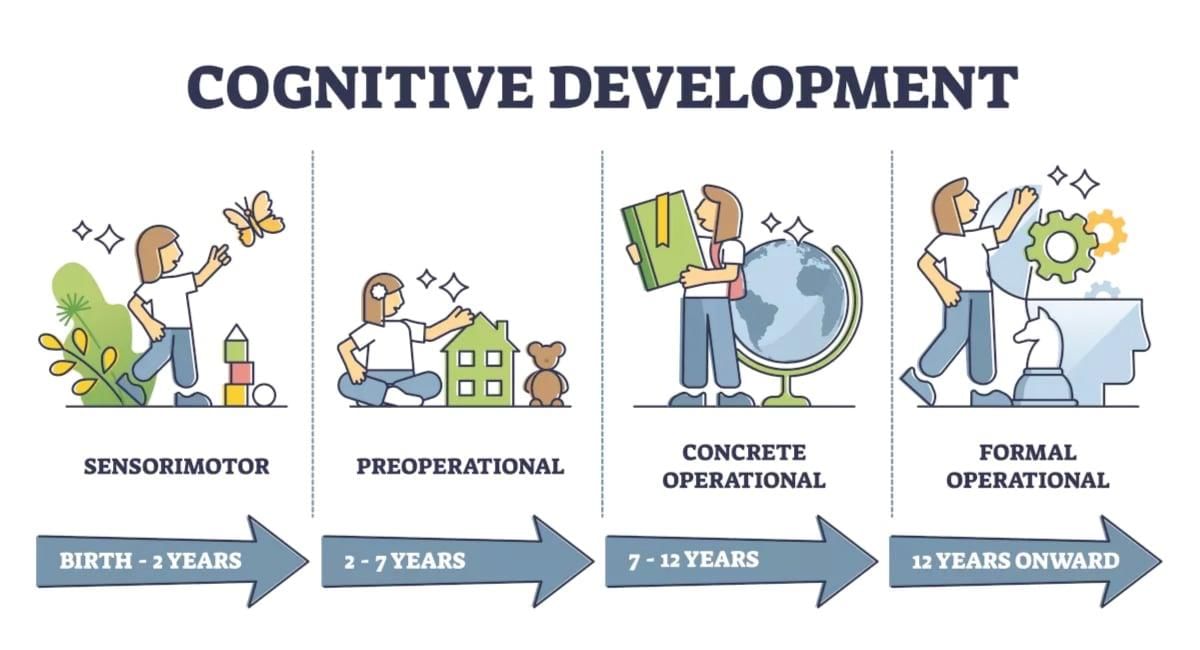
1. Sensorimotor Stage (Infancy: Birth to 2 Years)
- During this stage, which consists of six sub-stages, intelligence is demonstrated through motor activities without the use of symbols.
- Knowledge of the world is limited but developing, based on physical interactions and experiences. Object permanence, the understanding that objects continue to exist even when not visible, typically develops around seven months of age.
- Physical development, particularly mobility, allows infants to begin developing non-intellectual abilities, and some symbolic (language) abilities emerge towards the end of this stage.
2. Pre-Operational Stage (2 Years to 6 or 7 Years)
- In this stage, which includes two sub-stages, intelligence is demonstrated through the use of symbols, language, memory, and imagination.
- However, thinking during this stage is non-logical and non-reversible, with egocentric thinking being predominant.
3. Concrete Operational Stage (7 to 11 Years)
- This stage is characterized by the development of operational thinking, where mental actions become reversible.
- Intelligence is demonstrated through logical and systematic manipulation of symbols related to concrete objects.
- Children in this stage also develop an understanding of conservation concepts, including number, length, liquid, mass, weight, area, and volume.
4. Formal Operational Stage (11 or 12 Years Through Adulthood)
- At this stage, individuals develop the ability for abstract reasoning, hypothetical thinking, and understanding contrary-to-fact information.
- They also begin to grasp concepts of proportion and develop metacognitive abilities, such as evaluating the quality and logic of their own thoughts.
Cognitive development is a crucial aspect of human growth and progresses through these distinct stages. It is essential for parents and educators to provide a supportive environment that fosters the cognitive development of children during this period.
Terms Used by Piaget
To explain cognitive development and its achievement at different stages, Piaget introduced several key terms:
- Schema : Schemas are the building blocks of knowledge in the brain. They act as mental frameworks that inform individuals on how to respond to new information or situations. For example, when a baby is born, they have basic schemas related to reflexes and instincts, such as sucking and grasping. As a child grows and interacts with their environment, they develop new schemas, leading to changes in their cognitive structure.
- Assimilation : This process involves using an existing schema to understand a new situation or object. For instance, if a child sees a new type of dog and uses their existing schema of "dog" to understand it, they are assimilating information.
- Accommodation : Accommodation occurs when an existing schema does not fit a new situation, requiring a change in approach. For example, if a child encounters a creature that does not fit their existing schema of "dog," they may need to modify their understanding to accommodate this new information.
Equilibration: The Driving Force Behind Development
- Equilibration is the fundamental force that propels all kinds of development forward.
- According to Piaget, the processes of assimilation and accommodation are crucial for organisms to adjust and maintain a balanced relationship with their environment.
- This mechanism of adjustment is what Piaget termed as equilibration.
|
85 videos|67 docs
|
FAQs on Growth and Development - 1 Chapter Notes - Crash Course for UGC NET Education
| 1. What is the difference between growth and development in the context of human psychology? |  |
| 2. How do cognitive processes influence personality according to psychological theories? |  |
| 3. What is Gordon Allport's Trait Theory of Personality, and why is it significant? |  |
| 4. What does the concept of functional autonomy mean in psychology? |  |
| 5. How does Gestalt Theory of Learning apply to mental health practices? |  |





















